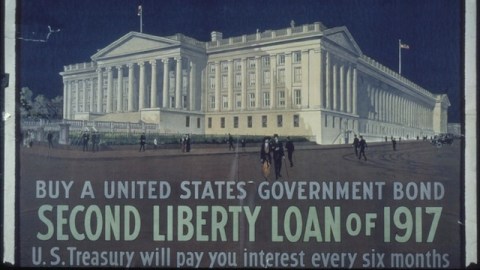Why the U.S. Should Borrow More

The hottest investment right now may be U.S. treasury bonds. Daniel Kruger reports this week that here was record demand for treasuries in 2010. At a recent auction for four-week bonds the government received a record $9.00 in bids for every dollar of bonds sold, even though the bonds pay no interest. And long-term treasuries returned more than 25% this year, more than any year since 1995. That’s compared to a less than 1% gain for the stocks in the S&P 500.
You would have thought the value of U.S. government debt would have fallen after S&P downgraded the federal government’s credit rating for the first time ever in August. But investors know that the U.S. remains perfectly capable of paying off its debts. So the yield of bonds continued to fall after the downgrade, as demand for them continued to rise. The yield has fallen so far that the real yield—the interest rate the bonds return minus the inflation rate—of bonds with up to ten-year maturities is actually below zero. That means that in effect buyers are paying the U.S. government to borrow their money and keep it safe for them.
That means, as Ezra Klein points out, that, even though the federal government borrowed $1.3 trillion in 2010, it’s actually cheaper for the government to borrow money now than it was when the U.S. ran surpluses under President Clinton. As Klein says, that’s not exactly because the U.S. government finances are so strong. It says more about how weak the rest of the world economy is. The U.S., in other words, is benefiting from a massive flight to safety. With the eurozone crisis, U.S. treasuries are just about the only investment in the world that is still virtually risk-free.
As I wrote in September, this is an enormous opportunity for the U.S. As Klein says, when you can borrow money at zero interest or lower, it means that “any investment with any positive rate of return is worth making.” That makes this the perfect time to invest in our crumbling infrastructure or in education, especially since investing now would help stimulate the economy and put unemployed Americans back to work. While borrowing money normally has a cost in the sense that it drives interest rates up and ultimately slows the economy, with interest rates at zero percent, that’s not much of a concern. What’s keeping us from doing this is the widespread belief—in spite of the evidence—that balancing budgets is the key to economic growth. While it’s true that in the U.S. cannot continue to spend much more than it takes in indefinitely, if there was ever a time for the U.S. government to take out a loan, it’s now.
Image: U.S. National Archives and Records Administration




